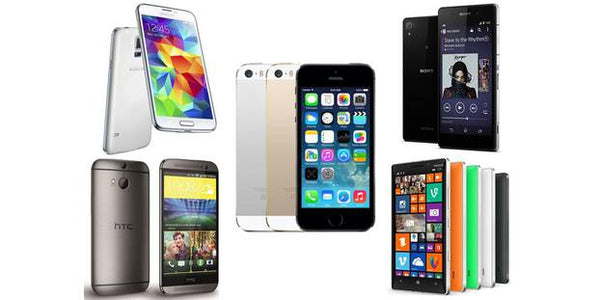Does your phone support Qi charging or wireless charging?
Wireless charging is a technique that allows devices to be charged wirelessly over (very) short distances. Wireless charging has the advantage of being faster and easier because you don't have to plug and unplug your gadget each time; instead, you simply lay it on top of your wireless charging pad. It also looks nicer on tables and allows you to charge your devices whenever you choose.
Below are the models that support wireless charging:
◆ Apple iPhone: 8, 8 Plus, X, XR, XS, XS MAX
◆ Samsung Galaxy: Note 9, S9, S9+, Note 8, S8, S8+, S7, S7 Edge (Plus more devices)
◆ Sony: Xperia XZ3, Xperia XZ2 Premium, Xperia XZ2 (Plus more devices)
◆ LG: G7 ThinQ, V30, G6 (US version only), G4 (optional), G3 (optional) (Plus more devices)
◆ Nokia: 8 Sirocco
◆ Huawei: Mate series (Plus more devices)
◆ Microsoft Lumia: 1520, 1020, 930, 929, 928, 920
◆ Google Nexus: 4, 5, 6, 7 (2013) Pixel series
◆ BlackBerry: Priv (Plus more devices)

If your smartphone appears in the list, it implies it is equipped with a thin adaptor that incorporates the necessary coil for wireless charging. Place your phone on the magnetic charging pad, and it will begin charging immediately. Quick and simple to use.
If your smartphone isn't listed, it's possible that you're still using an older version of the device. Is this to say that you can only use wireless charging if you buy a new iPhone XR or Android S9? We must first understand how wireless charging works.

The magnetic field generates an electrical current within the device when the receiving magnetic plate on the mobile device comes into contact with the transmitter - or at least within the set range. After that, the current is converted to direct current (DC), which charges the built-in battery. All of this happens in a fraction of a second.
If your smartphone does not support wireless charging on its own, wireless charging adapters will be required. Regardless of the type of charging port on your smartphone: Wireless charging adapters, whether MicroUSB, USB-C, or Lightning, can make wireless charging possible. Simply plug in the adapter and place the phone on a wireless charging station to begin charging. Although it may appear that you are still charging your phone through the wall outlet, the source of electricity has changed using this adapter.
Aside from wireless charging adapters, you may also get a phone case with a built-in charging adaptor. As a result, even if your smartphone does not enable wireless charging on its own, you can still benefit from it.
Lexuma XMount - Qi Wireless Car Charger Mount With Automatic Infrared Sensor



